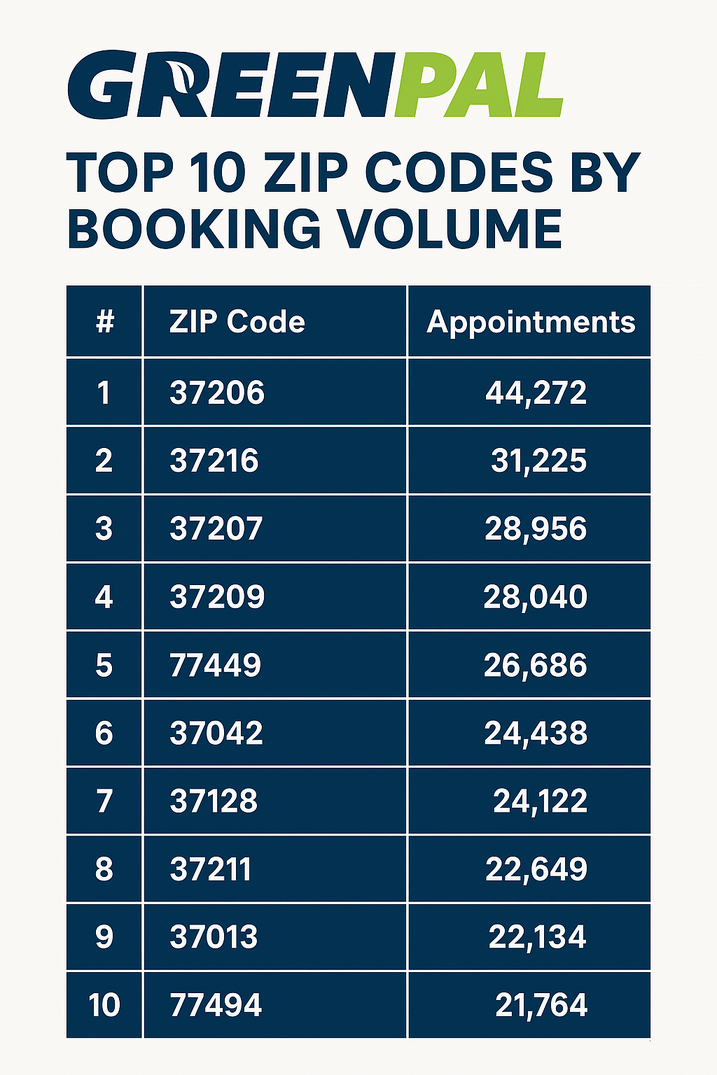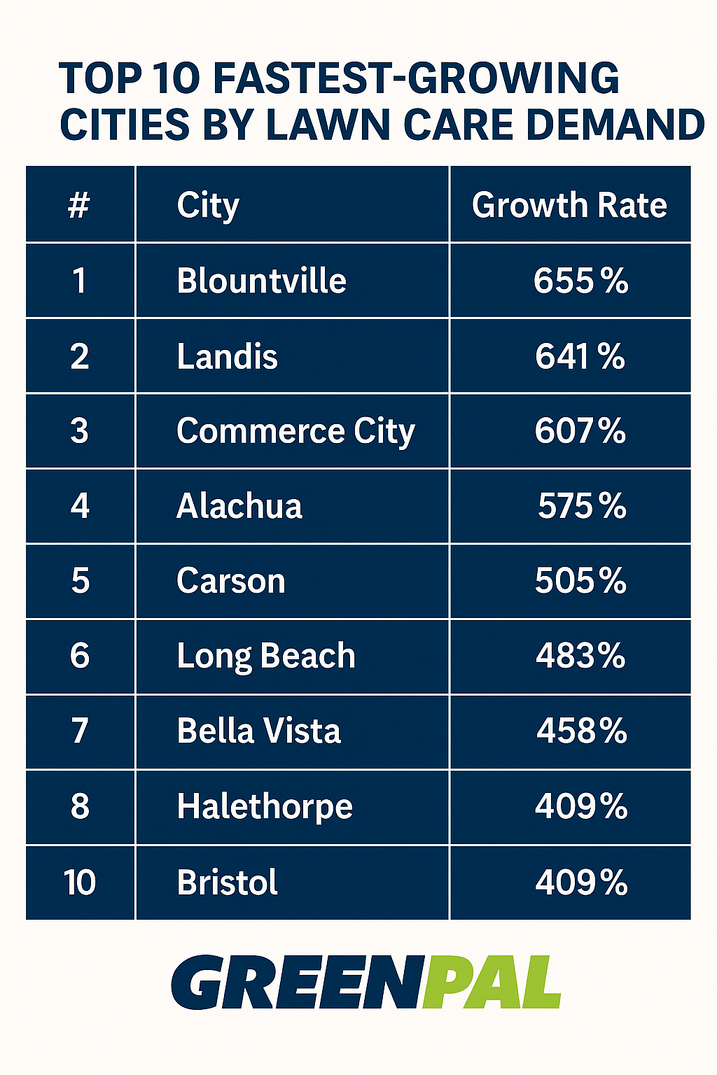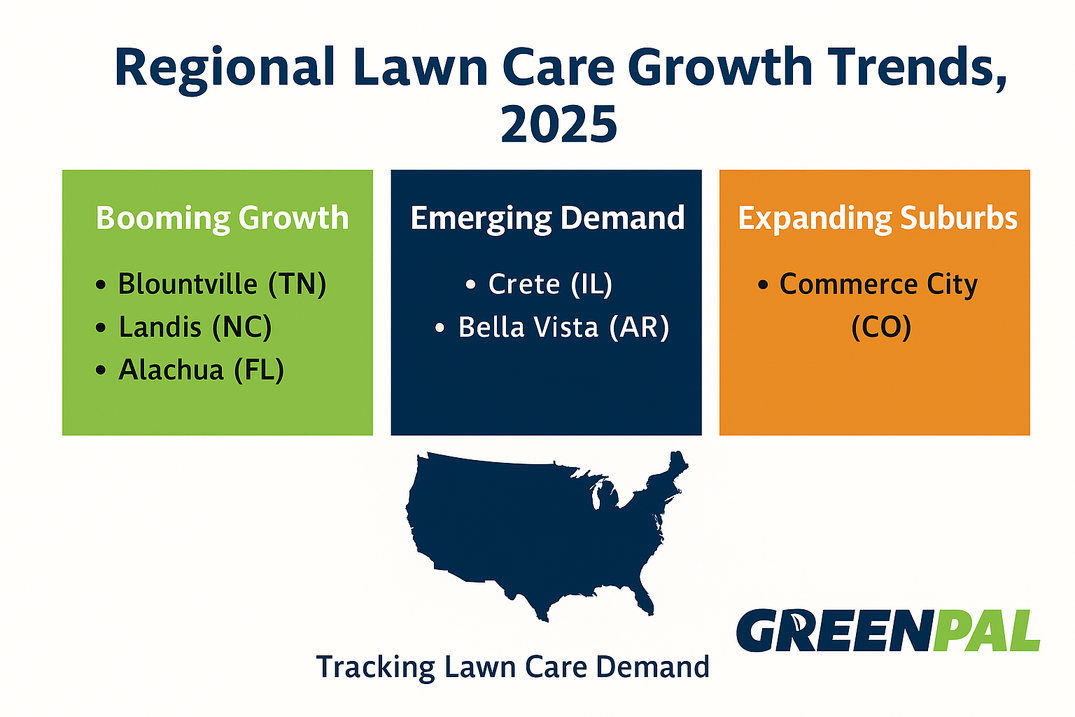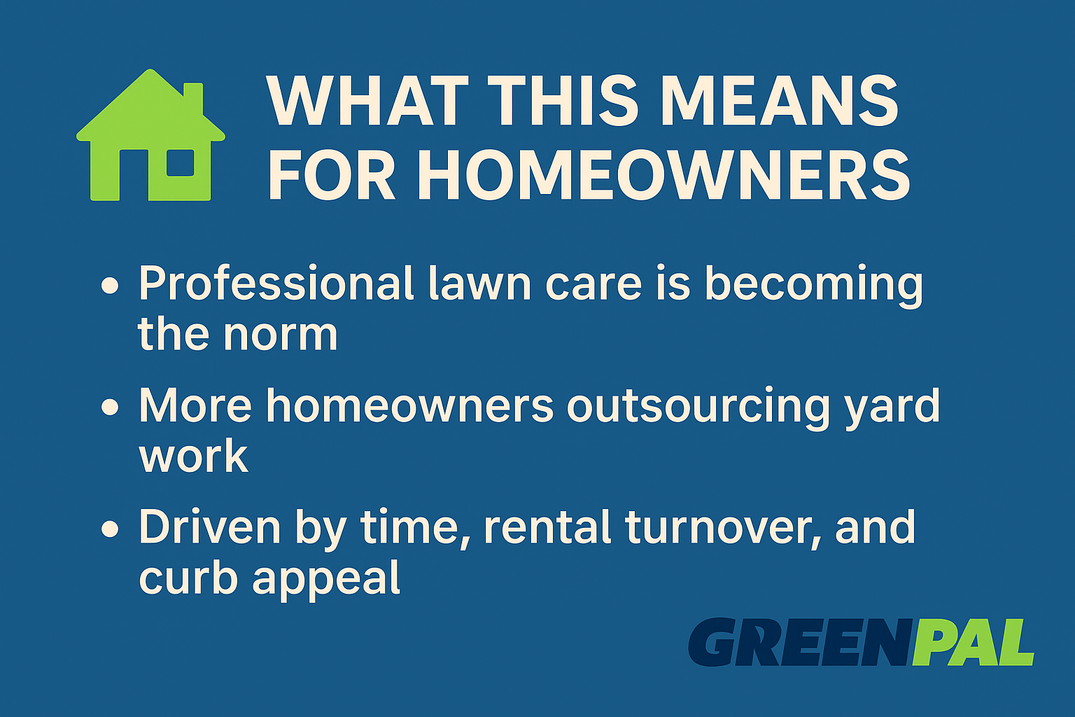Lawn Care Trends 2025: The Zip Codes and Cities Growing the Fastest
Lawn care isn’t just about green grass anymore; it’s about tracking where homeowners are investing in curb appeal and professional maintenance. The latest booking data reveals surprising shifts: some of the busiest zip codes are in fast-developing metro suburbs, while smaller towns are seeing explosive year-over-year growth.
This data gives us a glimpse into up-and-coming areas, showing where lawn care is becoming a priority for homeowners. From Nashville neighborhoods booking tens of thousands of appointments to small towns like Blountville, TN, seeing a 655% jump in demand, lawn care is a reliable indicator of growth, turnover, and housing trends. Here's a look at the trends we saw in 2025.
.png)
The Zip Codes With the Most Lawn Care Bookings
The highest-volume zip codes often mirror urban expansion and suburban sprawl. These are places where homes sit on larger lots, rental turnover is high, and reliable lawn care is essential.
Key Observations:
Nashville leads the way. Four Nashville-area zips (37206, 37216, 37207, 37209) dominate the Top 10, reflecting the city’s rapid growth and influx of new homeowners. Nashville’s combination of historic neighborhoods and booming new builds makes lawn care a necessity.
Houston suburbs stand tall. Both 77449 (Katy) and 77494 (Richmond) highlight how Houston’s growth continues to drive high service demand. These areas feature larger yards and busy families who rely on outsourced maintenance.
Military influence in Clarksville. The 37042 zip code near Fort Campbell shows how military communities lean on dependable lawn services during frequent relocations.

The Cities Where Lawn Care Demand Is Growing Fastest
High volume indicates that lawn care is already established. Growth tells us where it’s spreading. In these areas, you may see more people moving to the city or new construction bringing new homes.
Top Growth Cities:
Blountville, TN: +655% — a small town near the Tri-Cities, seeing surging housing demand and turnover.
Landis, NC: +641% — in the Charlotte metro area, benefiting from rapid suburban expansion.
Commerce City, CO: +607% — a Denver suburb growing quickly with new residential development.
Alachua, FL: +575% — north of Gainesville, this small city reflects broader Florida growth.
Crete, IL: +536% — a suburban market outside Chicago, expanding as families look for space.
These jumps suggest that secondary marketplaces outside major metro cores are now driving the biggest increases in lawn care demand.

Regional Trends in Lawn Care Growth
Looking beyond the lists, a few regional trends stand out:
The Southeast is booming. Cities in Tennessee, North Carolina, and Florida all made the growth list, pointing to broader migration patterns into the Southeast.
The Midwest emerges. With Crete, IL, and Bella Vista, AR included, it’s clear that families moving outward from larger cities are driving new demand.
Western metros expand outward. Commerce City, CO, shows how western metro growth corridors are spilling into surrounding suburbs.
These trends align with national housing data showing people moving into smaller markets where homes come with larger yards — and bigger lawn care needs.
What This Means for Homeowners and Vendors
For homeowners, the takeaway is clear: in both established metros and small towns, professional lawn care is becoming the norm. More homeowners are outsourcing yard work, whether due to time constraints, rental turnover, or simply wanting consistent curb appeal.
For vendors, the growth story is just as important. Lawn care providers in emerging markets like Blountville or Landis can get ahead by establishing a strong presence now, while demand is spiking. Meanwhile, providers in Nashville or Houston see the benefits of high booking density in mature markets.
Key Takeaways
High-volume zips show where lawn care is already an essential service — mostly in fast-growing metros like Nashville and Houston.
Fastest-growing cities reveal the next wave of demand — smaller towns and suburban markets where homeowners are rapidly adopting professional services.
Regional trends highlight the Southeast, Midwest, and Western suburbs as the biggest growth corridors in 2025.
Book Your Local Lawn Care
The lawn care industry is a window into larger housing and migration trends. As families move, yards grow larger, and suburban living expands, lawn care services are among the first local needs to rise. Whether you’re in a high-demand metro zip or a fast-growing small town, the trend is clear: lawn care demand is growing nationwide. Book your next lawn appointment with GreenPal.
*Lawn Care Trends data based on over one million lawn care appointments booked through the GreenPal platform from 2023 to 2025.





 Share
Share




.png)






